Category: blog
Scientists say that there might be some possibilities to sneeze during sleep based on the knowledge of how our body and brain work.
As the allergy season approaches, many are already bracing themselves that they’ll spend most of the time sneezing and wiping their nose. Tissues will become their best friend. For others, though, this is a sign of worry. In recent years, the number of people who suffer from some sleep disorder that prevents them from getting proper rest and disrupts their daily functioning has increased. If you add seasonal allergies to this, it can be a troublesome period during which you pray that it goes away as soon as possible.
It is no surprise that people started to wonder “If it’s possible to experience allergy attack and discomfort during the night when you’re sick, can you sneeze in your sleep? More importantly, can it disrupt your sleep?”
In this article, we will talk about the phenomenon of sneezing, how it occurs, and if it is possible to sneeze during the night.
Can you Sneeze in your sleep
While you physically can sneeze at night, a process called REM atonia suppresses impulses for sneezing while sleeping. The neurotransmitters which are usually in charge to detect some allergens or foreign particles, that can trigger sneezing, are asleep during the process of REM atonia
Although this topic needs to be studied more in the future, sleep researchers say that there might be some possibilities to sneeze during sleep based on the knowledge of how our body and brain work.
However, many of them also agree that there is not enough research to provide a firm answer. One researcher who has been involved in many studies said that he hasn’t experienced that someone sneezed during sleep, but he hasn’t provoked them either. He also states that the reason we are often provoked to sneeze is due to external factors when we are active during the day, but we are not exposed to most of them while sleeping.
Even though this may be true, some experts say that we should sneeze during sleep more because lying on our stomach, back, or side can cause our mucous membranes to swell, but our body has an interesting trick to keep us asleep. .
How Does REM Atonia Affect Sneezing?
Our circadian clock oversees sleep, and it’s controlled by sunlight. When the sun is down, hormone melatonin is released and makes us feel drowsy. Once the sun is up again, people feel more alert as melatonin wears off.
During the night, our sleep is composed of five stages that are a part of our circadian rhythm. Four of them are non-REM stages that make 75 percent of our rest, and one is REM sleep that makes 25 percent.
- In the first stage, our body enters light sleep. As the name explains enough, during this stage you can easily wake-up, but your eye movement slows down, and the activity of the muscles is reduced.
- In the second stage, the waves of the brain and eye movement slow down. This stage prepares our bodies for deep sleep, so the heart rate and the body temperature are much lower.
- In the third stage, the delta waves (slow-moving waves of the brain) are in dynamic with rapid waves that combined cause body to enter deep sleep making a transition between sleep that is non-REM and REM. During this stage parasomnias like bedwetting and sleepwalking are most likely to happen.
- When our body gets into the fourth stage, our body is in slow-wave sleep.
- The fifth stage is the REM stage where REM atonia and dreams occur while we sleep.
REM atonia, as we mentioned before, leads to certain neurotransmitters shutting down. Because of that, the neurons that cause the action of sneezing are not triggered even if our nasal cavity is exposed to irritating particles.
It can lead you to think “Okay during the fifth stage it is understandable that we don’t sneeze, but what about the other four stages of sleep?” Good question. It is the part where science might be too complicated to comprehend. In stages that are non-REM, the cerebral cortex and thalamus activate each other to hold back reactions like sneezing. But if a stimulus is strong enough to trigger the sneezing, then the person who was sleeping will wake up and sneeze. Even though we cannot unconsciously sneeze in sleep, we might wake up in non rem sleep and sneeze due to something that triggered our sneeze reflex.
How to Stop the Sneezing Reflex While Sleeping?
There are some measures of precaution that you can take to ensure you won’t wake up due to the urge to sneeze:
- Vacuum the bedroom often to remove allergens and other dust particles.
- Make sure you clean your pillow and pillowcases regularly to prevent exposure to dust mites.
- Do not place your clothes on your bed due to particles of pollen that cling to fabric.
- If you own a pet and your pet sleeps with you, you should wash bedding set at least once a week.
Interesting Sneezing Myths
Sneezing with eyes open – Some people believed that if you sneeze with open eyes, they will pop out. Don’t worry that won’t happen. We automatically shut our eyes, and the pressure that builds up as we sneeze is not enough to make our eyes pop out.
The heart will stop if you sneeze – Former president of the American University of Cardiology, Dr. Conti, believed that due to the sensation of sneezing your heart stops for a few seconds, but later on, it was discovered that the heart could change the rhythm of beating, but it does not stop because of a sneeze.
Sneezing is a sign that somebody is thinking of you – If this is true then celebrities can’t stop sneezing. Although we don’t know the origin of this myth, Japanese people made their version of it. They believe that sneezing one time means someone is gossiping about you, two times means it’s something bad, and three times means that somebody is in love with you.
Sneezing of a baby – It is so adorable when a baby sneezes, but in some countries like in Britain, people once believed that every time a baby sneezes it means it is under a spell of a fairy. If a Maori baby sneezes, it means good news and prosperity, while in Tonga it is a sign of bad luck.
Sneezing will reveal Gods plan – In Ancient Rome, Greece, and Egypt, people believed that if you sneeze God will reveal your future, good or bad.
A strong sneeze will lead to a fatal event – In Europe, during the Middle Ages, people believed that life is tied to one’s breath. If a sneeze was too loud and a large amount of breath was ejected, it was a bad sign that something fatal would happen.
“Bless you” – One thousand five hundred years ago people held a belief that when a person sneezes it, the soul leaves the body for a short period of time leaving your body to be occupied by the Devil. So, the term “bless you” was like a protection for the soul of the sneezer.
Similarly, during the great plague in the 13th century, the pope would encourage people to bless the sneezer as it would protect him/her from the terrorizing plague.
Cat sneeze determines the luck of one’s marriage – In Italy, it was believed that if the bride hears a cat sneezing on the day of her wedding, it means that her marriage would be filled with happiness, but if the cat sneezes three times, her family will catch a cold.
Content from the original document.
A new study investigates the prevalence of RBD in veterans with PTSD or concussions, researching the link between these conditions and neurodegeneration.
REM sleep behavior disorder (RBD) is an uncommon sleep condition found in less than 1% of the population. However, a recent study by Oregon Health and Sciences University has discovered that this disorder is significantly more common among veterans.
Typically, the REM phase is when most of our dreaming occurs, and during that time, our muscles are paralyzed so that we don’t act out our dreams. This is called muscle atonia, and it is often missing in people who have RBD, which results in nocturnal movements during REM sleep. As a result, a person can injure themselves or their partners during sleep.
According to the new findings published in the journal SLEEP, military veterans with traumatic brain injury (TBI) or post-traumatic stress disorder (PTSD) are much more likely to suffer from RBD.
Researchers kept 394 veterans for an overnight sleep study at the VA Portland Health Care System to analyze their sleep performance. Muscle activity was closely monitored to diagnose RBD.
Even though the condition affects less than 1% of the general population, the number goes to 9% among veterans. And when we look at individuals with PTSD, the number jumps to 21%.
These results are troubling because RBD is often connected with other neurodegenerative conditions such as Parkinson’s disease. Both conditions affect similar brain regions, and many people with RBD develop Parkinson’s disease later on.
And although researchers do not know whether veterans with PTSD will develop Parkinson’s disease, it is essential to find an answer to this question, and possibly slow down neurodegeneration and development of the disease.
The exact mechanism behind the role of PTSD in developing RBD is not known, but scientists suspect it has to do with chronic stress. The concussions the veterans might have been exposed to could accelerate neurodegenerative processes.
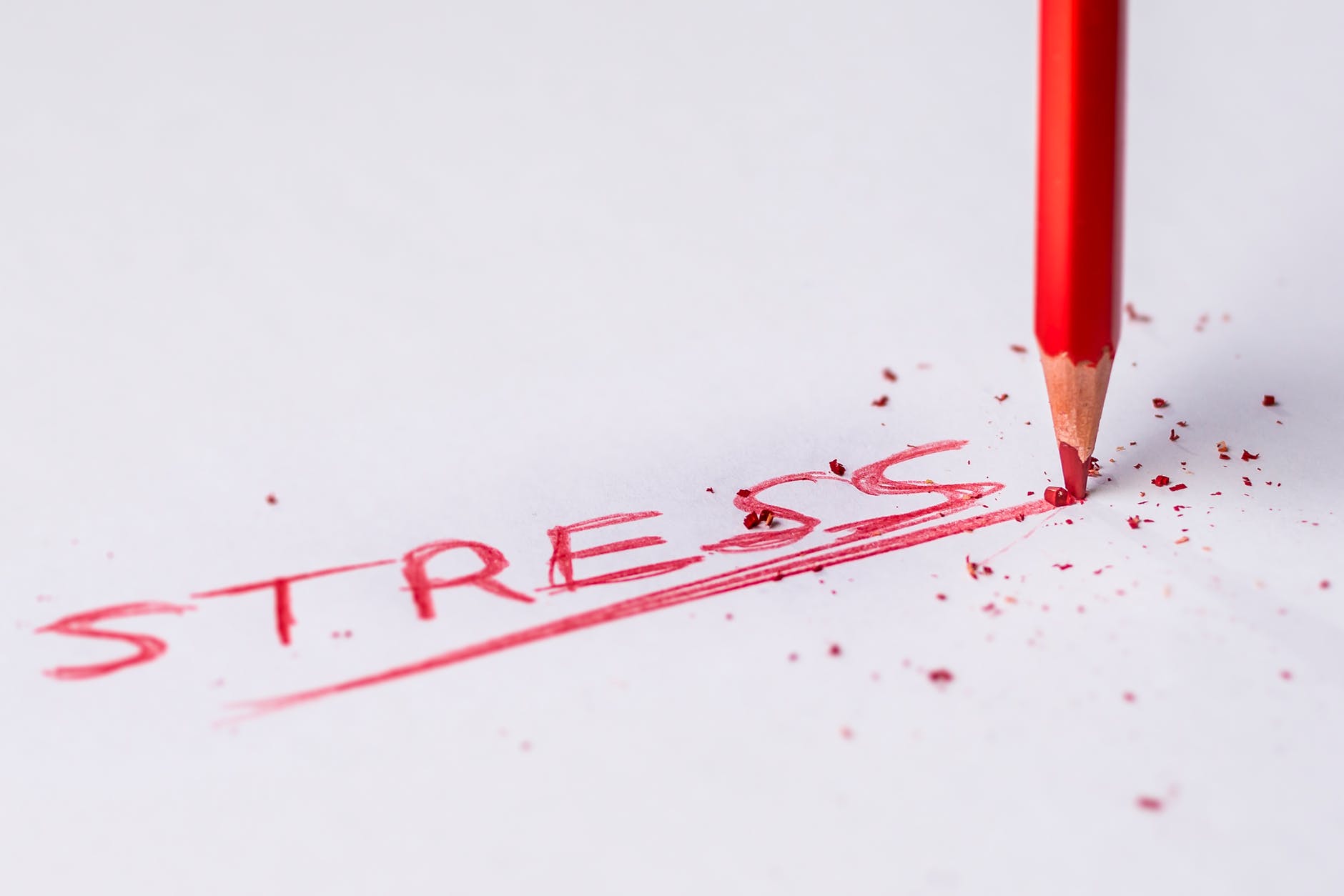
The team will continue to keep track of each participant with RBD to look for the early signs of Parkinson’s disease. Unfortunately, there is no cure for this condition, but there are some treatment options that aim to ease symptoms.
That means that when a person is diagnosed with Parkinson’s disease, it is usually too late to reverse the symptoms, which is why it is vital to look for early signs of neurodegeneration, and RBD seems to fit the description. That could allow doctors to intervene early, slow down the degradation of neurons, and possibly prevent the disease from developing.
[wl_faceted_search]
Optimism has been linked with better health outcomes, and in this new study, researchers show that it can even lead to better sleep.
Samantha was naturally inclined to worry. She usually concentrated on the downside and was constantly vigilant for any possible issues. Consequently, she frequently found it challenging to fall asleep, often spending hours turning in bed before she could finally fall asleep.
One day, Samantha stumbled upon an article about the benefits of optimism for sleep. She was intrigued by the idea that a positive outlook could actually help her get better rest. She decided to give it a try and started incorporating more positive thinking into her daily routine.
At first, it was hard. Samantha had to consciously reframe negative thoughts and find the good in difficult situations. But gradually, she started to notice a difference. She felt more relaxed and less anxious, and her sleep improved as well. She found herself falling asleep faster and waking up feeling more rested.
Samantha was thrilled with the results and started sharing her newfound optimism with others. She encouraged her friends and family to focus on the positive, even in challenging times. And as more people adopted this mindset, she noticed a ripple effect. People were kinder, more compassionate, and more resilient.
In the end, Samantha realized that optimism wasn’t just good for her sleep – it was good for her overall well-being. And she was grateful to have discovered this life-changing philosophy.
Research study explains benefits of optimism
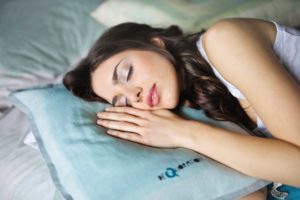
If “Always look on the bright side of life” is your motto, we have some good news for you. Optimism and better health outcomes go hand in hand, and many scientists have hypothesized that it may be due to more efficient restorative processes. Sleep is a time when our bodies and minds repair all the damages, and therefore our nightly rest is one of the most important restorative processes.
Researchers at the University of Illinois wanted to see how optimism affected sleep, and whether we could see an increase in quality and duration in optimistic people.
The team followed 3548 participants aged 32-51 who participated in the Coronary Artery Risk Development in Young Adults (CARDIA) study. In two instances, five years apart, participants filled a survey to help researchers asses their optimism levels.
All participants also filled a Pittsburg Sleep Quality Index and Epworth Sleepiness Scale to assess their quality of sleep during the prior month. The survey helped gain insight into how many hours participants had each night, as well as difficulty falling asleep, nighttime awakenings, and more insomnia symptoms.
Data showed that participants with higher optimism scores also experienced adequate sleep, resting six to nine hours every night. And additionally, they were 74% less likely to exhibit symptoms of insomnia and experience daytime sleepiness.
Failing to get adequate sleep regularly increases the risk of developing many conditions like cardiovascular diseases, high blood pressure, diabetes, and many more. And when you think about the fact that 1 in 3 people in the US doesn’t get enough sleep, you understand how dangerous the situation is.
That is why experts are trying everything they can to help people experience better nightly rest. And although optimism seems to work, achieving it isn’t something you can simply do.
Describing the exact mechanisms that allow optimism to affect sleep won’t be easy. Researchers suggest that it probably has something to do with optimistic people developing healthy ways to cope with stress. That allows them to process stressful events more efficiently and get adequate rest.
The team published their findings in the Behavioral Medicine journal. Their results were in line with the team’s prior studies, which showed optimists to have better heart health.
Although there was a significant positive correlation between optimism and sleep quality, the authors suggest that we should interpret these results with caution. There are more studies needed to draw definite conclusions and find out the mechanisms behind this link. In the meantime, positive thinking doesn’t hurt anybody, so maybe it is time we try to change how we perceive life.
According to a new study, persistent severe sleep problems in infants can be linked with prepartum and postpartum mental and physical health of mothers.
Few things are as crucial as sleep for a newborn. On average, infants dedicate 16 hours daily to sleep, which is vital for their physical and mental growth. Therefore, any sleep issues in the initial stages of life must be addressed immediately.
It is vital to learn what is causing these sleep disturbances. And according to a new study by the Murdoch Children’s Research Hospital, persistent severe problems in babies can be linked to poor maternal prepartum and postpartum physical and mental health.
A team of researchers led by Dr. Fallon Cook followed 1460 women at 15 weeks gestation, and when their babies were 3, 6, 9, and 12 months old.
Experiencing sleep problems during the first year is common, and based on the results of their research, the team divided infant sleep problems into five categories:
- Those who had a few issues (24.7%)
- Persistent moderate problems (27.3%)
- Increased problems at 6 months (10.8%)
- Increased problems at 9 months (17.8%)
- Persistent severe issues (19.4%)
Persistent severe sleep problems in infants were correlated with mental health in mothers during pregnancy and after childbirth. Infants with the mothers who had prepartum and postpartum feelings of anxiety and depression, lower overall perception of health, as well as increased intimate partner violence (IPV) during the first year after birth, were much more likely to have persistent sleep impairments
These findings suggest that there are more things affecting infant sleep than parenting style, with mothers’ well-being during and after pregnancy being one of the most significant factors.
According to the authors, these results are significant as they could be used to predict sleep problems in babies and possibly intervene before they occur. Additionally, parents of infants with sleep problems often fell exhausted, depressed, and anxious and have feelings of self-doubt when it comes to parenting.
And what these findings say is that some infants may be predisposed to sleep problems because of the impaired prepartum maternal mental health, despite how hard parents try to help their newborns sleep.
What we should focus on is identifying and addressing the mental and physical health of women during pregnancy and after childbirth. Parents should seek professional help from their GPs or child health nurse if they are feeling anxious, depressed, and fatigued. Reaching out to family, friends, and local parenting groups can also help.
Being a new parent is stressful enough without infant sleep problems, but when they occur, it can become unbearable. It is crucial to address these issues as soon as they present themselves and take care of your mental and physical health. You can check our science-based sleep tips for babies, for more info on tackling sleep problems in infants.
Disturbed sleep has a huge effect on mood, emotional state, and daytime functioning. This study researches the impact of poor sleep at an early stage.
At a young age, sleep ranks among the crucial necessities. It plays a key role in both physical and mental growth, alongside contributing significantly to emotional health. If you’re under the impression that issues like depression, anxiety, and behavioral challenges are exclusive to adults, you’re greatly mistaken.
An increase in the prevalence of these conditions in children shows that the situation is very serious, and we might have to look for triggers at the early stage of development.
A new study from the University of Birmingham investigates a link between sleep problems at an early age, and how they affect later emotional development. The results show that infants with poor sleep quality have a higher chance of developing depression, anxiety, or behavioral problems as toddlers.
Although it is well known how sleep disturbances can impact mood, irritability, and behavioral difficulties during the daytime, this study investigates how poor sleep affects behavioral and emotional health later in childhood.
Researchers from the University of Birmingham collaborated with the Finnish Institute for Health and Welfare to find out the impact of night awakenings, prolonged period of falling asleep, and short sleep duration on emotional state and behavioral problems in toddlers at 24 months.
The team used the results from sleep questionnaires from a study where parents reported sleep quality of their children at 3, 8, 18, and 24 months. They gathered the information from almost 1700 parents. Later, those results were compared with an additional questionnaire on emotional and behavioral state at 24 months, filled by 950 parents.
The results showed frequent night awakenings at three months of age to be strongly linked to the inability to control emotions and behavior, and overall emotional problems in toddlers. Additionally, both short sleep and longer sleep onset were correlated to behavioral problems at 24 months, such as temper tantrums.
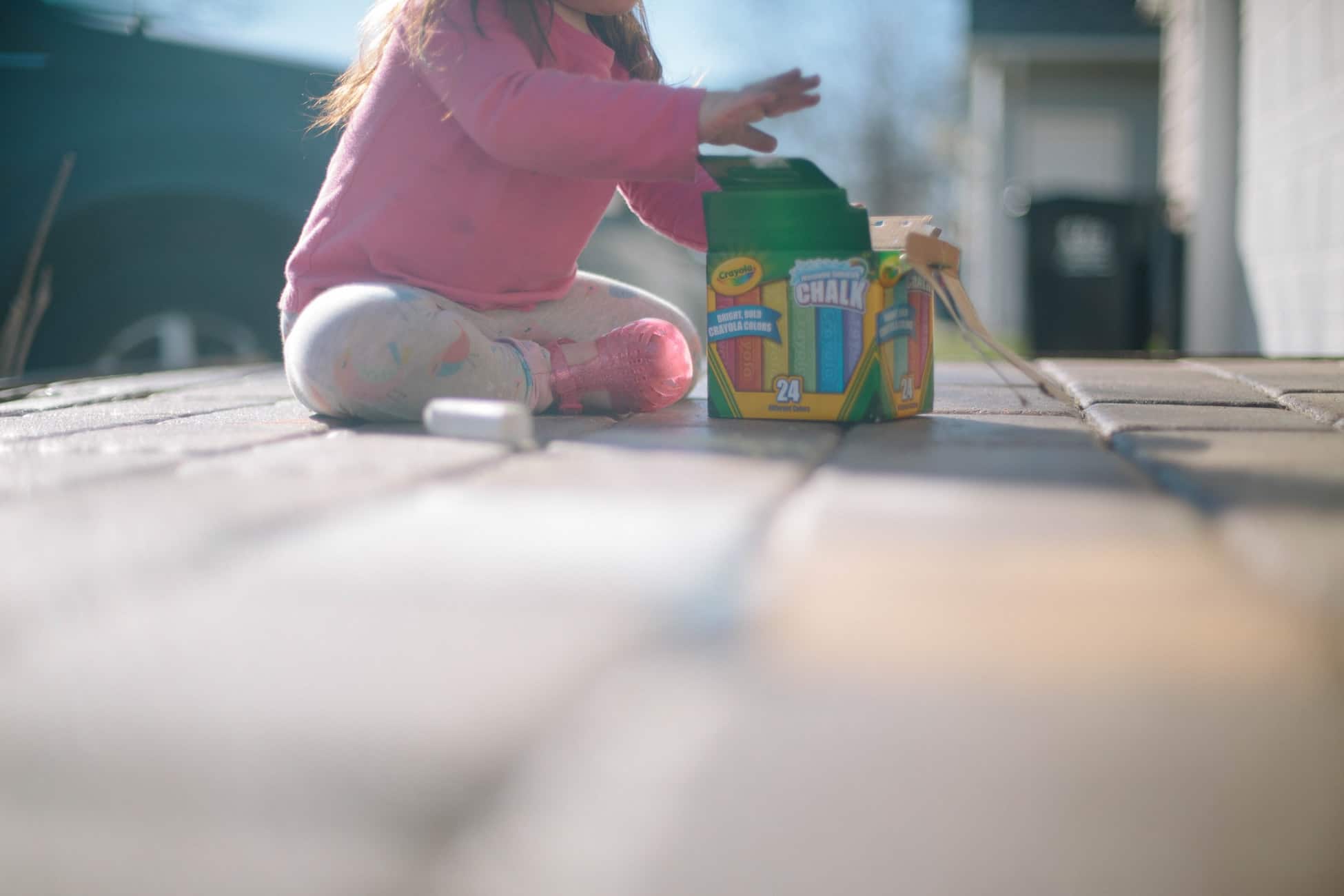
According to these findings, it is easy to conclude the enormous importance of sleep quality on mental health and the development of healthy coping mechanisms at a later age. These sleep disturbances could have different origins, form genetics to environmental factors. Of course, detecting poor sleep at a young age is vital for healthy development.
Authors highlight the importance of more research in this area, as well as developing novel interventions for infants with sleep problems, as it could be particularly beneficial for healthy emotional state and behavioral control in children.
A new study from UC Berkley highlights the importance of deep sleep in dealing with stress and anxiety. It is essential for both prevention and recovery.
Stress pops up like a sneaky cat, hiding around every corner of our daily lives. Try as you might, you just can’t shake it off completely. Getting the hang of taming stress and anxiety is super important for keeping your health in tip-top shape. If you’re keen on knocking stress down a peg or two, stick around. You’re about to discover some neat tricks that’ll help keep your cool, making a huge difference in your well-being!
According to a new study from the University of California, Berkley, sleep is an effective way to get your emotions in order. In fact, they claim that losing a night of sleep can lead to a 30% rise in anxiety levels the following day.
We all know that sleep is vital for our well-being, as lack of proper rest often leaves us irritable, prone to mood swings, and unable to concentrate or perform mentally. And according to UC Berkley researchers, a specific phase of sleep is responsible for resetting our anxious brains.
When we fall asleep, we experience a couple of light sleep phases at the beginning, following by deep sleep, and then finally rapid eye movement (REM) stage. It seems that deep sleep is particularly important for reducing stress and anxiety, as neural oscillations are deeply synchronized, and blood pressure and heart rate drop. That gives a perfect opportunity to reorganize connections in the brain and repair damage.
Study authors point that sleep is a natural remedy for anxiety disorders that are on the rise in the US, with over 40 million Americans suffering from them. What’s concerning is that we see a trend of prevalence increase in children and teens. But when you account for the fact that most children and teenagers aren’t getting enough sleep regularly, it all makes sense.
Using a series of experiments, researchers from UC Barkley scanned the brains of 18 young adults, while they watched disturbing video clips. The investigators wanted to see if there was any difference if the participants viewed stirring videos after a sleepless or a night full of sleep. They used polysomnography and functional MRI for measuring brain and other activity, and each session was followed by a questionnaire to assess the level of anxiety in participants.
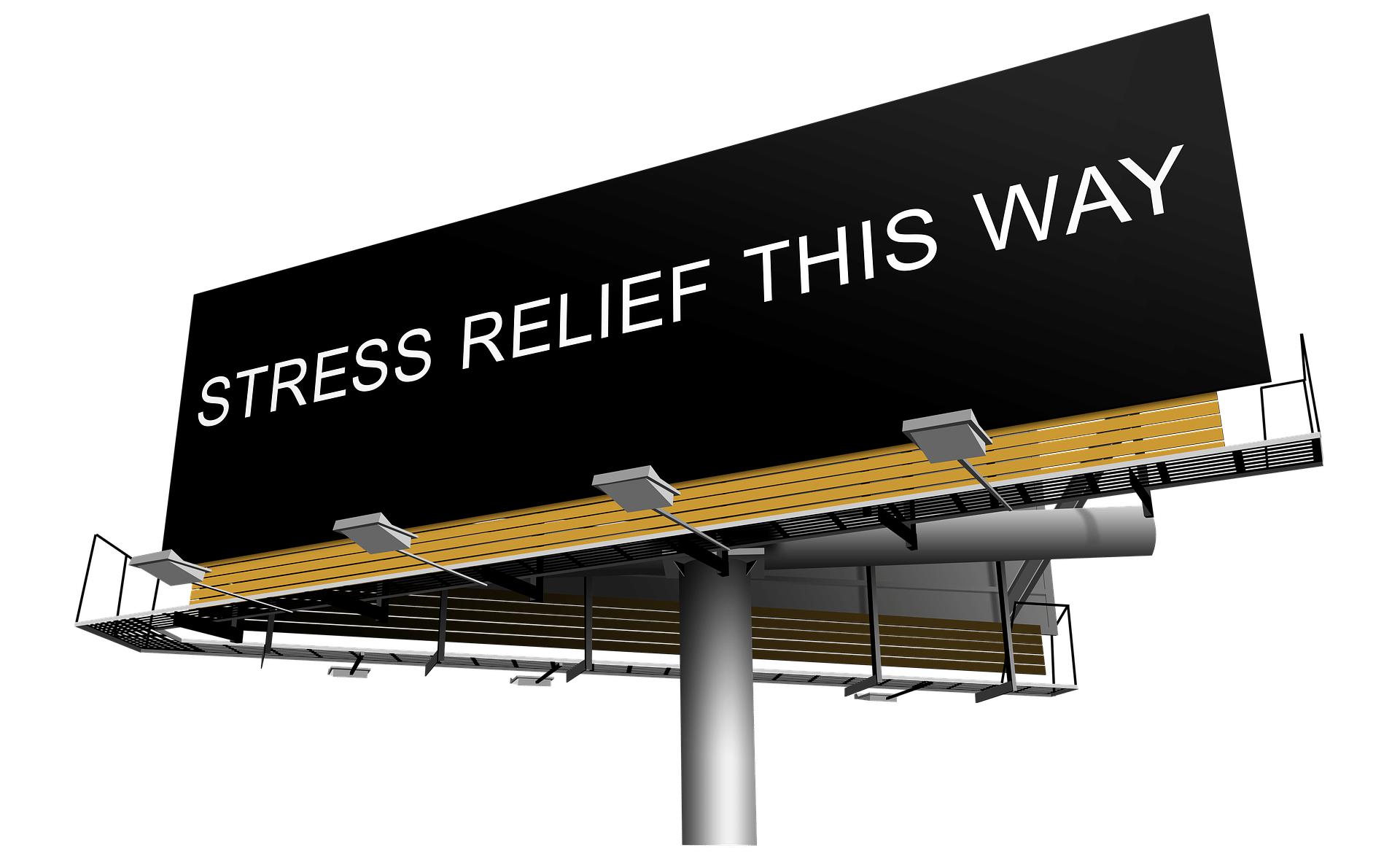
As expected, subjects who slept less had an increased anxiety response to viewing those disturbing videos. Brain scans showed complete inhibition of the prefrontal cortex, which generally keeps stress and anxiety in check. Additionally, emotional centers in the brain were overactive.
More importantly, after a night full of sleep, anxiety levels dropped significantly. And there was a positive correlation with deep sleep, meaning that participants who experienced more deep sleep had lower anxiety levels.
These findings show that deep sleep is essential for both the prevention and mediation of stress and anxiety.
Researchers managed to replicate their results in another similar study with 30 participants, where participants who got the most deep sleep also experienced the lowest anxiety levels the following day.
Additionally, researchers conducted an online study following 280 subjects for four days and tracking their anxiety levels. The results were similar to previous studies. But interestingly, even the slightest changes in deep sleep affected the anxiety levels.
All these findings support the argument that sleep recommendations should be a part of managing anxiety disorders. More importantly, sleep could be an excellent natural prevention for developing these conditions in the first place.
A new study explores how regular and irregular sleep patterns affect cardiovascular health in middle aged to older adults with diverse ethnic background.
Cardiovascular ailments encompass disorders related to the heart and blood vessels, and they stand as the leading cause of mortality globally, claiming the lives of nearly 18 million individuals annually, as reported by the World Health Organization.
When we talk about cardiovascular health prevention, exercise and diet get most of the spotlight. And although we do know that proper rest is also essential for our cardiovascular system, most recommendations focus solely on how long we sleep. A new study published in The Journal of the American College of Cardiology proposes that sleep patterns are a more significant risk factor for cardiovascular health than sleep duration. There are more factors determining sleep quality, and focusing only on sleep duration may not be the best solution when it comes to heart diseases.
Our internal clocks are responsible for keeping metabolism, heart rate, blood pressure, and sleep patterns running smoothly. So what exactly happens when the irregular sleep disturbs our internal clocks? Researchers from Brigham and Woman’s Hospital measured that exact effect.
The investigators examined data from the Multi-Ethnic Study of Atherosclerosis (MESA). The study included 1992 participants with diverse ethnic backgrounds and no history of cardiovascular diseases at the beginning. All the subjects were aged 45-84 years, and they were required to wear a wrist activity tracker for seven days. The device recorded their sleep activities and patterns.
After the initial measurements, participants were followed for five years on average. During that period, 111 subjects experienced a cardiovascular event, including strokes, heart attacks, and other adverse incidents.
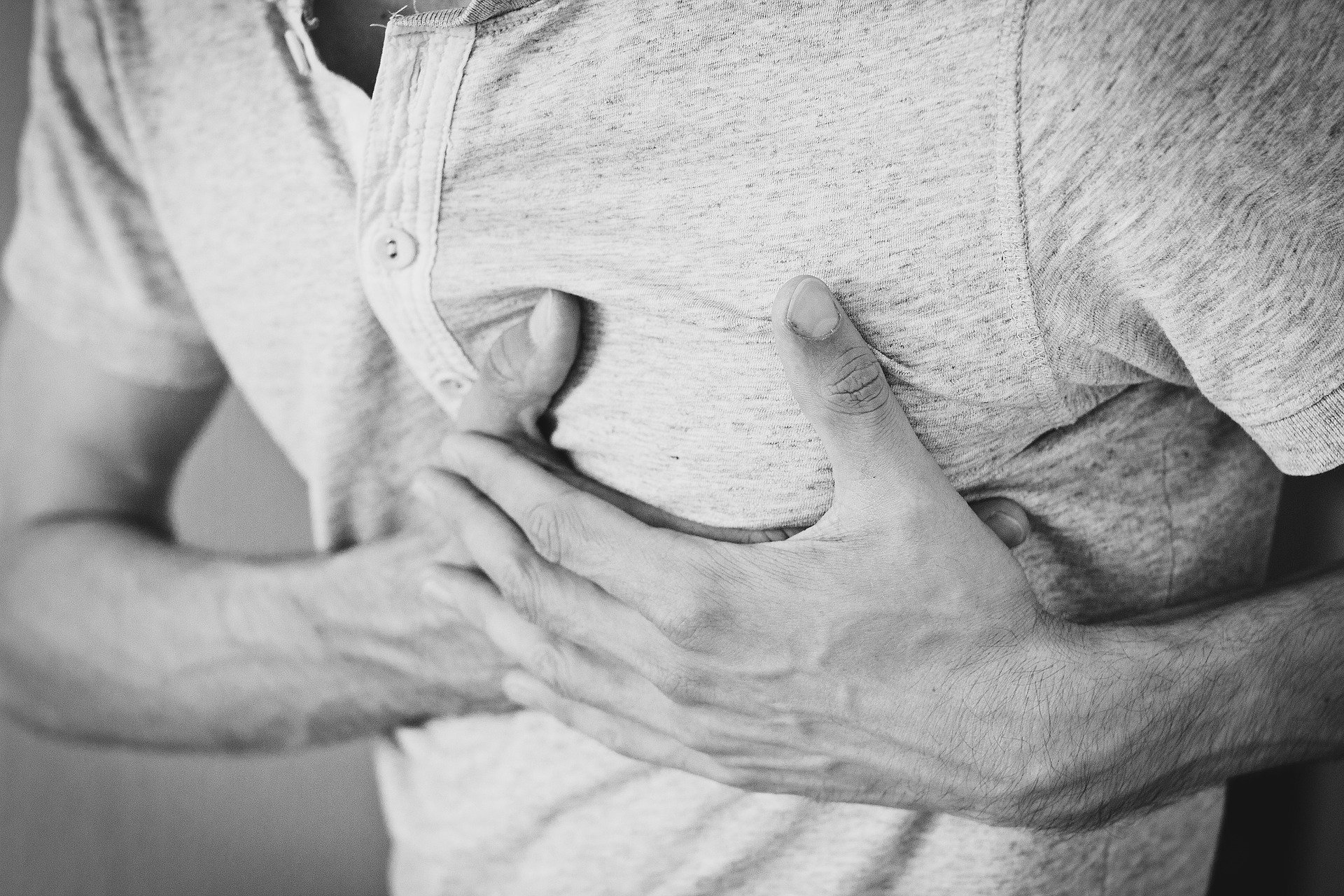
Researchers then divided participants into four groups depending on their sleep patterns. When it comes to sleep duration, the most irregular group had more than two-hour difference on a night to night basis, while the most regular one had less than an hour. The investigators also considered consistency, and they compared subjects with the most consistent schedules against those whose bedtimes varied each night significantly.
The results showed that cardiovascular events were most common in people with the most irregular sleep patterns. In fact, they estimate that only 8 in 1000 people with regular sleep patterns would have a cardiovascular event over one year, while that number rises to 20 in people with an irregular sleep schedule.
These results show that sleep consistency is another important indicator of sleep quality, besides sleep duration. The authors expressed an interest in researching this topic even further. They want to know whether an intervention such as a more regular sleep schedule could decrease a person’s risk of a cardiovascular event. Until then, findings from this study confirm how important it is to maintain good sleeping hygiene.
A new study investigates how sleep deprivation impacts the way we perceive food smells, increasing the desire for foods rich in sugars and fat.
Lack of adequate sleep can be detrimental to your health for various reasons. It notably hampers your body’s capacity for self-repair and elevates the risk of encountering numerous health issues, including heart diseases, diabetes, fatigue, among others. In addition, insufficient sleep often leads to cravings for foods that are high in sugar and fat.
When we are sleep deprived, we often go for junk food, and it can lead to weight gain and additional health problems. Scientists from Northwestern University wanted to investigate this link and find out what is the reason behind the desire for calorie-dense food choices following a sleepless night.
A new study hints that your nose may be the reason for junk food cravings. Sleep deprivation affects the olfactory system, which leads to a sharper perception of food smells. In addition, the communication between brain centers responsible for receiving food signals breaks down, which is why fries, donuts, and other junk food options seem like the best idea.
When certain parts of the brain aren’t getting proper signals, the brain may try to overcompensate by choosing energy-dense food. The researchers wanted to investigate why there is such a breakdown of communication between different brain regions.
Previous research has identified molecules called endocannabinoids (ECs) that are important for how the brain responds to odors, and they also play an important role in feeding behavior. When we are sleep deprived, there is an increased level of endocannabinoids in our blood. That is why these molecules were the logical suspect for investigation of this sudden change of eating behavior.
To investigate, researchers examined how sleep deprivation influenced food choices and how levels of an endocannabinoid called 2-oleoylglycerol (2-OG) changed. They tested 25 healthy adults with normal body mass index. Divided into two groups, participants experienced either usual or short sleep periods. After that, researchers analyzed 2-OG levels, food choices, and fMRI scans to see how sleep deprivation impacted brain connectivity.
Interestingly, when sleep-deprived people were given a choice to pick what they want to eat, they chose higher energy food like donuts, potato chips, and chocolate chip cookies. Sleep deprivation was also linked to higher levels of 2-OG.
Patients also underwent an fMRI scan before the buffet to help researchers understand how different odors affected signaling between brain regions. Interestingly, the piriform cortex, which is the first cortical brain region to receive olfactory signals, showed that food smells were perceived more strongly than non-food odors in sleep-deprived patients.
But that is not all.

The fMRI scans showed increased activity in the piriform cortex when sleep deprived patients encountered food odors. Source: Northwestern University
The piriform cortex sends signals to another region called the insular cortex, which is responsible for food intake and feelings of satiety. But when subjects were sleep-deprived, this connection was weaker, and it was also linked with an increase in 2-OG levels.
In conclusion, a lack of sleep influences the endocannabinoid system, which then affects different brain areas, and the result is an increased preference for energy-packed foods. The statistics show an alarming rate of sleep deprivation and obesity in the US, and these findings could help scientists to develop new ways of battling both things at once.
A newly developed deep learning model can accurately identify different sleep stages, making it a valuable sleep diagnostics tool.
Diagnosing sleep issues is crucial for the early identification of sleep disorders and ensuring the appropriate treatment is administered. If left unchecked, these disorders can significantly damage overall well-being and life quality.
However, diagnosing sleep disorders is a fairly complex process. You need to go to a sleep clinic where sleep technicians perform polysomnography, and then the results are interpreted by sleep specialists. One of the most crucial steps in this process is the identification of sleep stages. And a new study from the University of Eastern Finland gives presents a strong case to how a deep learning algorithm can help with the identification of different sleep stages.
Traditionally, sleep is divided into rapid eye movement (REM) and non-REM, with non-REM consisting of an additional three stages. Classification is performed manually during polysomnography and using several instruments such as electroencephalogram (EEG), electromyogram (EMG), and electrooculogram (EOG). This protocol is costly, time-consuming, and requires trained professionals.
That is why researchers from the University of Eastern Finland wanted to develop a deep learning model that can help with the identification of sleep stages and diagnosing sleep disorders such as obstructive sleep apnea (OSA).
OSA is one of the most common sleep disorders, and some estimates go as far as saying that over 30% of the world population suffers from it. And the number is only going higher with the increase in overweight and obese individuals, which is one of the most common risk factors for developing OSA. When untreated, this condition increases factors of cardiovascular diseases, diabetes, and other serious health implications.
To improve sleep stage identifications, researchers used data from healthy as well as individuals with OSA to develop a deep learning model. They wanted to look at the overall classification accuracy and also the precision with the increase of OSA severity.
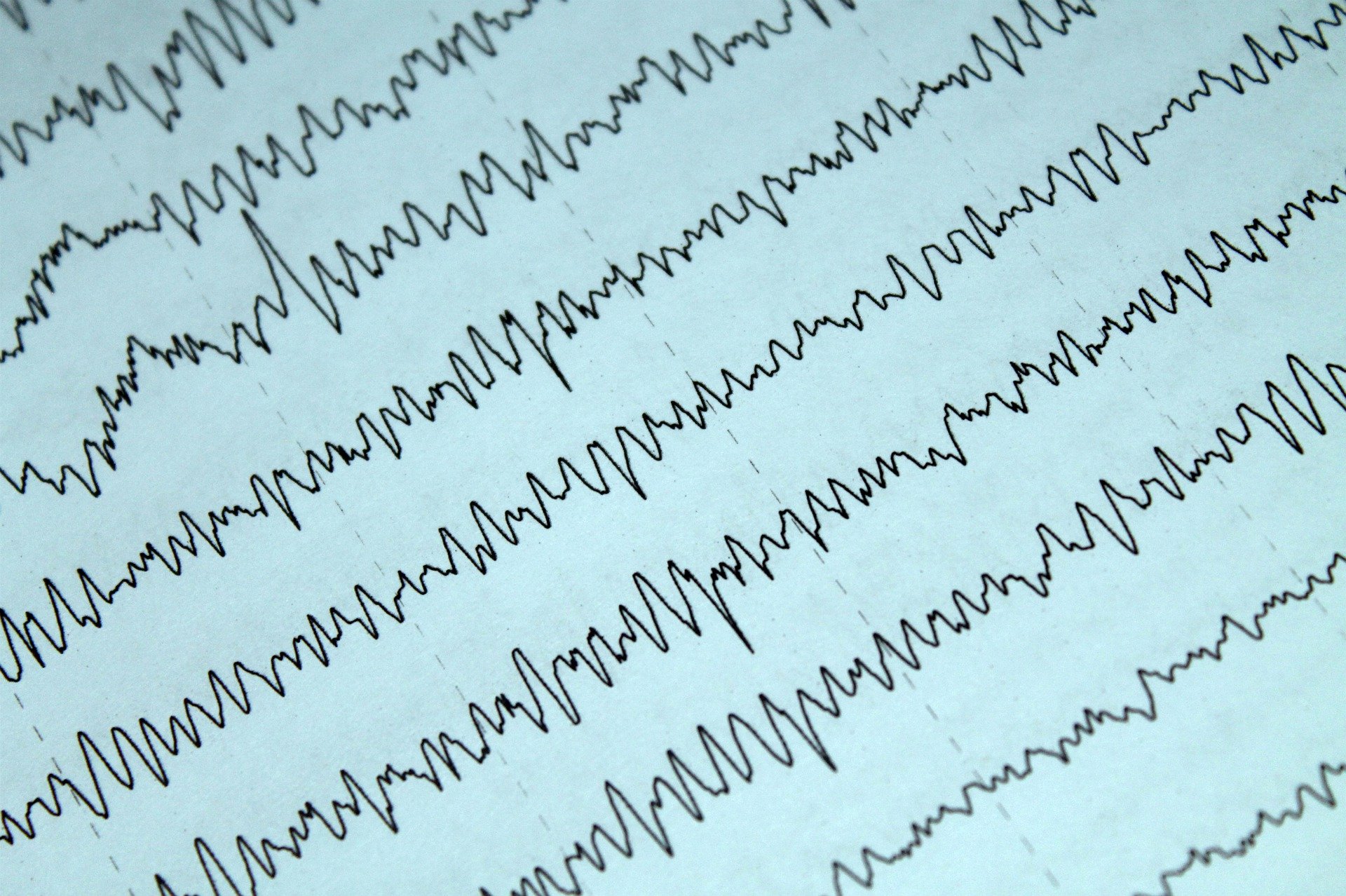
The results showed that the deep learning model had 83.7% accuracy classifying sleep stages using a single frontal EEG channel in healthy people. In individuals with suspected OSA, that number was 82.9%. After adding the EOG channel, it only slightly improved precision, and numbers rose to 83.9% in healthy individuals, and 83.8% in people with suspected OSA. According to these results, the model performed better than some previous ones, and its accuracy is equivalent to an experienced physician performing manual sleep stage identification.
The single-channel model had an 84.5% accuracy when predicting sleep stages in healthy adults, while the number went down to 76.5% in people with severe OSA symptoms. These results were expected, as even experienced physicians have problems identifying stages in patients with severe OSA, as their sleep architecture changes due to sleep fragmentation.
These findings are promising, and it could mean we are about to start using advanced deep learning models for highly accurate sleep diagnostics. Wearable non-intrusive sensors, improved diagnostics, and artificial intelligence learning are potentially the future of AI diagnostics, not just sleep. Hopefully, this deep learning model can help with OSA diagnostics, assessment, and providing better treatment.
A new study looks into the relationship between sleep duration, mental health, cognitive performance, and brain structures in children.
Childhood is a crucial period for the development of our central nervous systems, making it imperative that during this time, children are provided with all necessary essentials. This encompasses appropriate nutrition, both physical and mental stimulation, a sense of joy, and, importantly, sufficient sleep.
Sleep is essential for proper cognitive functioning. It is well known that lower sleep duration is correlated with cognitive and mental health problems in adults. However, a large scale analysis of this correlation has lacked in children.
A new 2020 study wanted to analyze the impact of sleep duration on psychiatric and cognitive problems, and also see how it impacts different brain structures.
Researchers from the University of Warwick investigated over 11,000 children aged 9-11 from the Adolescent Brain Cognitive Development (ABCD) consortium. All the children came from the US with a wide range of geographic, ethnic, socioeconomic, and health backgrounds.
Behavioral measurements were used to obtain sleep duration, cognitive, and mental health assessments. Researchers also looked at structural MRIs to see if there were any changes in central nervous system composition in relation to sleep duration.
After statistical analyses, researchers found that the feelings of anxiety, depression, and impulsive behavior were negatively correlated with the sleep duration in participants. The same could be said with cognitive performance. Interestingly, the mental well being of parents was also negatively correlated with the amount of sleep their children were getting.
Looking at the neural imaging, researchers noticed a trend of lower brain volumes, especially in particular areas such as temporal, prefrontal, and orbitofrontal cortex, inferior and middle temporal gyrus, precuneus, and supramarginal gyrus.
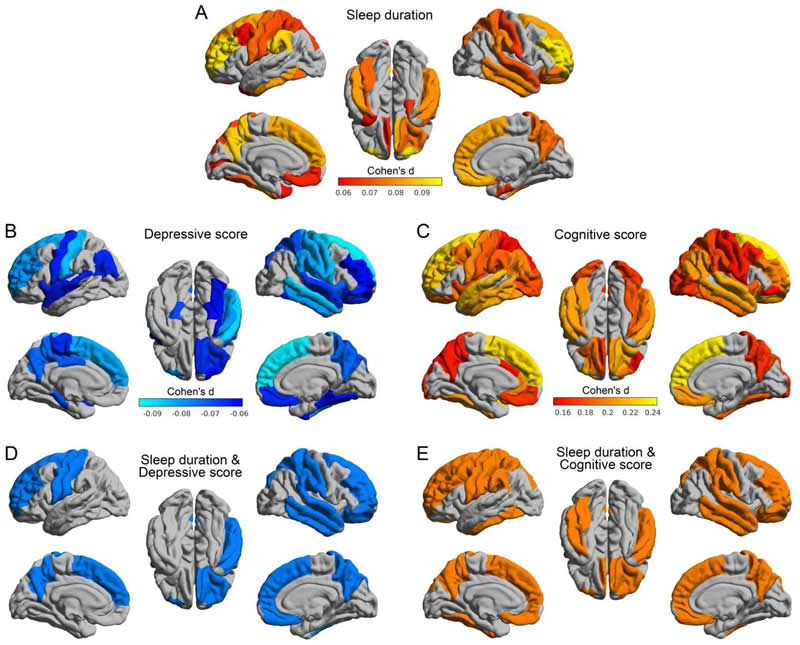
Different brain areas affected by sleep. Source: University of Warwick.
After one year, a follow up with around half the initial participants showed depressive symptoms were correlated with shorter sleep duration even at that time. Since there is a complex link between sleep and mental health, we often see sleep disturbances in people with depression and anxiety. And it can be hard to break from that circle since mental health problems make it harder to maintain good sleep hygiene, and a lack of proper rest makes these conditions worse.
The biggest problem is that the majority of children don’t get enough sleep on school nights. Inappropriate screen time, the use of electronics before bedtime, inadequate school schedule, too much homework, and other activities can all impact your child’s rest. However, you should try your best to teach them the importance of sleep.
One of the coauthors, professor Edmund Rolls stated that children who slept for less than 7 hours on average expressed 53% more behavioral problems and had a 7.8% lower cognitive score than children who slept 9 to 11 hours. These numbers should highlight just how essential sleep is for both mental health and cognitive performance.
Although we need that sleep is vital, especially in the developing period, researchers admit that we need more studies to discover the underlying mechanisms for these links.